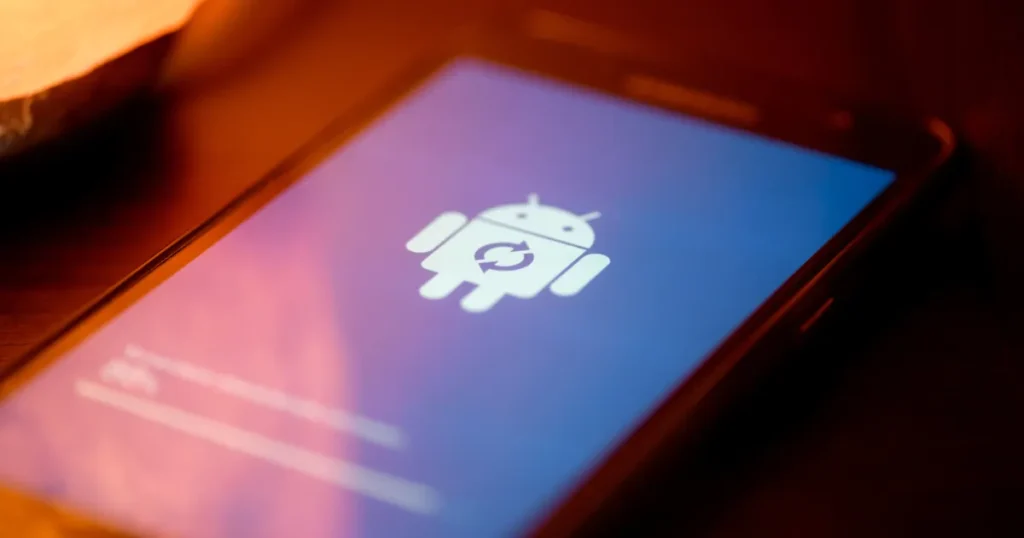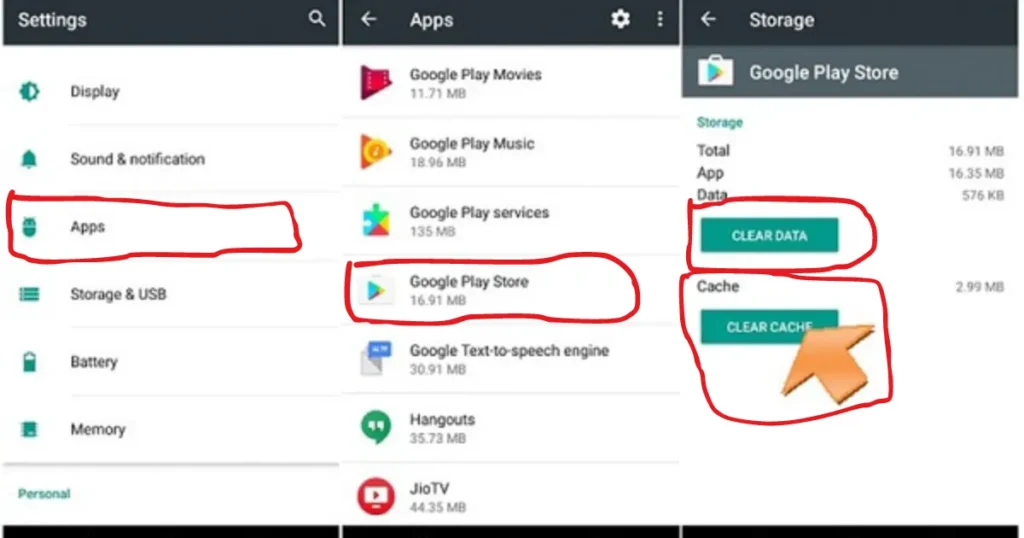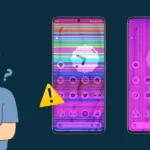Android App Crashing: A Step-by-Step Troubleshooting Guide
Description

Why does your Android app keep crashing especially on startup?
Android app crashing is a common frustration that users encounter, often leading to interrupted service and a poor user experience. This issue can arise from various factors, including insufficient memory, outdated applications, and compatibility issues across different Android versions and devices.
These crashes not only disrupt daily operations but also pose significant challenges for developers striving to maintain app stability amidst the rapidly evolving Android ecosystem.
Addressing Android app crashing involves a comprehensive troubleshooting guide that dives into the root causes of these disruptions.
Whether it’s Android messages app crashing, the Android Google app crashing, or your phone keeps stopping with a close app notice, our article outlines strategic solutions to mitigate these issues.
By updating your system software, optimizing your network connection, and clearing app data, you can significantly reduce the incidence of crashes. For those facing more persistent problems, such as apps keep closing on Android or Samsung phone crashing after an update.
We promise actionable steps to diagnose and resolve these challenges effectively, ensuring a smoother, more reliable app experience on your device.
Table of Contents
What causes Android to crash?

Why does your Android app keep crashing? This frustrating issue can stem from various technical glitches and limitations within your device. Here, we explore the primary reasons behind these disruptions.
- Outdated Software and Apps: Running outdated versions of apps or the Android operating system itself can lead to crashes due to compatibility issues with newer technologies or security updates.
- Corrupted App Data: Corrupted files or accumulated cache can disrupt app functionality, causing crashes. Regularly clearing cache and app data can mitigate this issue.
- Insufficient Storage and Memory: Apps may crash if there isn’t enough storage space to perform tasks or if the device’s RAM is overloaded with too many apps running simultaneously.
- Network Issues: A weak or unstable internet connection can prevent apps from functioning correctly, especially those that rely heavily on cloud services or real-time data syncing.
- Software Bugs: Bugs within the app or the operating system can cause unexpected crashes. These could be due to coding errors, failed updates, or compatibility issues with certain hardware.
- Overheating: Excessive use or running high-performance tasks can lead to device overheating, which in turn causes apps to shut down to cool the system.
- Improper Error Handling: If apps are not designed to handle exceptions and errors gracefully, they might crash when faced with unexpected conditions.
By understanding these common causes, we can better diagnose why an app is crashing and take appropriate steps to prevent future occurrences.
Also Read: How to fix “App not installed” error on Android 2024
Android App Crashing: A Step-by-Step Troubleshooting Guide
01. Identifying the Cause
Why does your Android app keep crashing? To effectively troubleshoot, it’s crucial to pinpoint the exact cause of the crash. Here’s how you can identify the root of the problem:
- Force Stop and Clear Cache/Data
- Navigate to your phone’s Settings app, find the crashing app under ‘Apps,’ and select ‘Force Stop.’
- To clear cache and data, tap on ‘Storage’ and then on ‘Clear Cache’ and ‘Clear Data.’
- Restart in Safe Mode
- Restarting your device in Safe Mode can help determine if third-party apps are causing the crash. This mode will disable all third-party apps temporarily.
- Check App Conflicts and Storage
- Ensure there is sufficient storage available on your device as low storage can cause apps to malfunction.
- Check for any app conflicts by observing if the issue persists after updates or new app installations.
- Review App Permissions
- Sometimes, apps require certain permissions to function properly. Check and verify that all necessary permissions are granted.
- Utilize Developer Tools for Deeper Insights
- Use
logcatfrom the Android SDK to view system logs that can provide clues on what happened before the crash. - The Play Console offers a feature under ‘Quality’ > ‘Android vitals’ > ‘Crashes and ANRs’ where you can analyze detailed reports about crashes and application not responding (ANR) errors.
- Use
By following these steps, you can start to understand why your Android app is crashing and take appropriate action to prevent future issues.
02. Updating Your Android System Software
Why is Updating Your Android System Software Crucial?
Have you ever wondered why your Android app keeps crashing on startup? Often, the underlying issue could be outdated system software, which may not be compatible with newer versions of apps.
Keeping your system software up-to-date is crucial for ensuring compatibility and enhancing overall device performance.
Steps to Update Your Android System Software
- Check for System Updates:
- Navigate to “Settings” on your Android device.
- Scroll to “Software update.”
- Tap on “Download and install” to check if there are any updates available.
- If an update is available, follow the prompts to download and install the latest software version.
- Update Your Apps Regularly:
- Open the Google Play Store.
- Go to “My apps & games.”
- Apps with available updates are listed here. You can update them individually or all at once by tapping “Update All.”
- Ensure Google Play Services is Up-to-Date:
- Google Play Services is a background service that helps your apps run smoothly. Errors in this app can cause other apps to malfunction.
- To update Google Play Services, search for it in the Google Play Store and tap “Update” if available.
Promised Solutions to Prevent Future Crashes
By regularly updating your Android system software and apps, you can minimize the risk of app crashes.
These updates not only provide new features but also contain bug fixes and performance enhancements that are essential for the smooth operation of your device and its applications.
Remember, an updated system is your first defense against the frequent issue of Android app crashing.
03. Optimizing Your Network Connection
Why Does My Android App Keep Crashing Due to Network Issues?
Have you ever wondered why your Android app keeps crashing when your network connection is poor?
Network-related crashes are common when your app requires a stable internet connection to function correctly, such as for streaming content or synchronizing data.
Effective Solutions to Optimize Your Network Connection
- Restart Network Devices and Your Android Phone
- Turn off your mobile data and Wi-Fi router for a few minutes.
- Restart your device to clear any temporary glitches.
- Turn on mobile data or reconnect to your Wi-Fi network.
- If issues persist, try connecting to a different network to see if the problem is network-specific.
- Update Apps and Manage Network Settings
- Ensure all your apps are updated to their latest versions as updates may include optimizations for better network handling.
- Check and adjust your mobile or Wi-Fi settings to ensure optimal connectivity.
Proactive Measures to Prevent Future Network-Related Crashes
- Understand and Manage Radio State Machine: Knowing that the radio state machine has three energy states—full power, low power, and standby—can help you manage how your app uses the network. Minimize the time the radio spends in full power by bundling data transfers.
- Prefetch Data: Implement intelligent prefetching of data which reduces the number of times your app needs to wake up the radio, saving battery and reducing crashes.
- Pooling Network Connections: Instead of starting a new connection for each request, pool connections to reduce the frequency of turning the radio to full power.
- Simulate Network Conditions: Use tools like Throttly or Android Studio’s Emulator to test how your app behaves under different network conditions. This can help you identify and fix issues before they affect users.
By following these steps and understanding the underlying network mechanisms, you can significantly reduce the chances of your Android app crashing due to network issues.
04. Clearing App Data and Cache

Why is Clearing App Data and Cache Essential for Android App Performance?
Have you ever wondered why your Android app keeps crashing or running slowly? Often, the culprit is the buildup of old or corrupted cache and data.
Clearing these can not only resolve crashing issues but also enhance your app’s performance.
Step-by-Step Guide to Clear App Cache and Data
- Force Stop the Problematic App:
- Go to Settings > Apps & notifications > See all apps.
- Find and select the problematic app.
- Tap on ‘Force Stop’ to ensure the app has completely stopped running.
- Clear Cache:
- In the same app settings, tap on ‘Storage & cache.’
- Click on ‘Clear Cache’ to remove temporary data stored by the app.
- Clear Data:
- Under ‘Storage & cache’, tap ‘Clear Storage’ or ‘Clear Data.’
- Confirm by tapping ‘OK.’ This step deletes all data related to the app, including your settings and login details.
Promised Solutions After Clearing Cache and Data
Clearing cache and data might sound like a simple solution, but it’s a powerful one. By doing so, you free up storage space and eliminate data that could be causing the app to crash or malfunction.
This process is especially useful for apps that frequently update or store large amounts of data, such as social media platforms or multimedia apps.
Regular maintenance, such as clearing cache and data, ensures that your apps run more smoothly and reliably. Remember, after clearing data, you may need to log in to the app again or reconfigure settings.
Freeing Up Device Storage
Why Does My Phone Keep Closing Apps Due to Storage Issues?
Is your Android phone app crashing due to lack of storage space?
When your device runs out of room, it can’t function optimally, leading to frequent app crashes and sluggish performance.
Freeing up storage on your Android device is a critical step in maintaining its efficiency and functionality.
Effective Strategies to Free Up Storage
- Uninstall Unused Apps:
- Review the apps installed on your device and remove those that you no longer use. This can significantly free up space and enhance device performance.
- Clear Cache and Manage Media Files:
- Regularly clear your app cache from the Settings menu under Apps & notifications > See all apps > [Select App] > Storage & cache > Clear Cache.
- Manage media files by deleting old photos, videos, and music or transferring them to cloud storage.
- Use Android Storage Manager:
- Access Android’s built-in Storage Manager to identify and remove files that are no longer needed, such as old downloads and redundant files.
- Move Files to External Storage:
- Transfer large files or infrequently accessed data to an SD card or a portable storage device to keep your device’s internal storage free for essential apps and data.
- Leverage Cloud Storage:
- Utilize cloud storage services like Google Drive or Dropbox to store documents, images, and other files. This not only frees up physical storage but also secures your data online.
Promised Solutions for Storage Management
By implementing these storage management strategies, you can prevent your Android app from crashing and ensure smoother, faster performance.
Regularly monitoring and managing your device’s storage will help maintain its optimal functionality, allowing you to enjoy a seamless mobile experience.
05. Reinstalling the Problematic App
Why Reinstall the Problematic App?
Are you wondering why your Android app keeps crashing even after trying several fixes?
Sometimes, the solution lies in addressing potential corruption or outdated versions by reinstalling the app.
This can refresh the app’s environment and eliminate deep-seated issues that cause disruptions.
Steps to Reinstall Your Android App
- Restart Your Device:
- Before uninstalling the app, restart your device to clear any temporary glitches that might be affecting app performance.
- Uninstall the App:
- Navigate to Settings > Apps & notifications > See all apps.
- Select the problematic app and tap on ‘Uninstall.’
- Reinstall the App:
- Open the Google Play Store and search for the app.
- Tap ‘Install’ to download the latest version of the app.
- Restore App Preferences if Needed:
- If the app continues to crash, try resetting the app preferences:
- Go to Settings > System > Reset options > Reset app preferences.
- This resets app permissions and other settings without affecting your personal data.
- If the app continues to crash, try resetting the app preferences:
- Factory Reset as a Last Resort:
- If the issue persists, consider backing up your data and performing a factory reset:
- Navigate to Settings > System > Reset options > Erase all data (factory reset).
- If the issue persists, consider backing up your data and performing a factory reset:
Promised Solutions for a Smoother Experience
Reinstalling an app can significantly improve its performance by eliminating outdated files and data corruption.
By following these steps, you are likely to resolve the crashing issues and enjoy a smoother, more stable app experience on your Android device. Remember, regular updates and maintenance are key to preventing future problems.
FAQs
How can I fix an Android app that keeps crashing?
To address a crashing app on your Android device, start by optimizing your internet connection. Next, clear the app’s data and cache from your device settings, as this can resolve issues by removing corrupted data. If the problem persists, try uninstalling and then reinstalling the app to correct any installation errors. If these steps fail, a factory reset of your device may be necessary, but be sure to back up your data first.
What steps should I take to troubleshoot an Android app?
Begin by checking your Android version and ensuring your device software is up to date. Restart your phone and update any apps or software that are outdated. If the issue continues, use your phone’s settings app to force stop the problematic app. This can often resolve issues by halting any erroneous processes.
What is the best way to stop an app from crashing?
If an app is unresponsive, manually killing the app is the most straightforward solution. Restarting the app can clear temporary glitches and is akin to rebooting a computer to resolve issues.
How do you debug an Android app that crashes frequently?
When debugging a frequently crashing Android app, utilize the stack trace from the Play Console or the output from the logcat tool to identify errors. If a stack trace isn’t available, try to replicate the crash locally by manually testing the app or by contacting affected users to reproduce the issue while monitoring with logcat. This method can help pinpoint the source of the crash.
Conclusion
Throughout this article, we’ve carefully dissected the frustrating dilemma – why does your Android app keep crashing? Identifying the core causes from outdated software and apps to network issues, and insufficient storage.
We’ve unraveled the complexities behind these disruptions. By offering a step-by-step guide, we emphasized actionable strategies like updating your system software, optimizing network connection, clearing cache, and managing your device’s storage, promising a smoother app experience.
Promising solutions have been our cornerstone, ensuring that anyone facing these setbacks finds relief. Reinstalling problematic apps and adhering to regular maintenance are not just recommendations but actionable steps towards mitigating app crashes.
We ensure that with the execution of the discussed strategies, you’re well on your way to enjoying a stable and efficient Android app experience. The roadmap laid out here not only anticipates the challenges but promises a resolution, reinforcing our commitment to solving the problem of app crashes.














